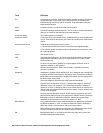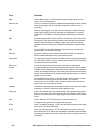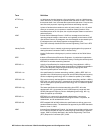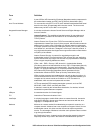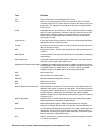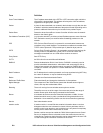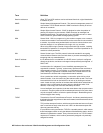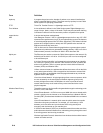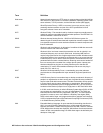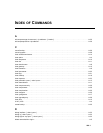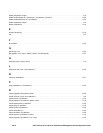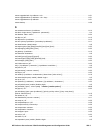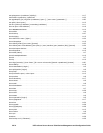Term Definition
Web server Network host that acts as an HTTP server; a computer that provides World Wide
Web services on the Internet; it includes the hardware, operating system, Web
server software, TCP/IP protocols, and the Web site content (Web pages).
WEP Wired Equivalent Privacy - WEP is a common, but not very secure, way of
protecting wireless networks and part of the Wi-Fi specification's built-in
encryption scheme. Known to be vulnerable.
Wi-Fi Wireless Fidelity - The standard used by wireless component manufacturers to
make their products compatible with other wireless products. The IEEE 802.11b
wireless standard is also known as Wi-Fi.
WINS Windows Internet Naming Service - WINS is a MS Windows system for
determining the IP address associated with a particular network computer. DNS
is an alternative system for name resolution suitable for network computers with
fixed IP addresses.
WLAN Wireless Local Area Network - A derivative of a traditional LAN that uses radio
waves to transmit data rather than cables.
Wireless LAN; a local area network that transmits over the air typically in an
unlicensed frequency such as the 2.4GHz band. A wireless LAN does not
require lining up devices for line-of-sight transmission like IrDA. Wireless access
points (base stations) are connected to an Ethernet hub or server and transmit
a radio frequency over an area of several hundred to a thousand feet and can
penetrate walls and other nonmetal barriers. Roaming users can be handed off
from one access point to another like a cellular phone system. Laptops use
wireless modems that plug into an existing Ethernet port or that are self
contained on PC cards, while standalone desktops and servers use plug-in
cards (ISA, PCI, and so on).
WLIF Wireless LAN Interoperability Forum; a membership group that endorses
products that are interoperable with major standards; supports OpenAir and
802.11.
X.500 X.500 Directory Service is a standard way to develop an electronic directory of
people in an organization so that it can be part of a global directory available to
anyone in the world with Internet access. The idea is to be able to look up people
in a user-friendly way by name, department, or organization. Because these
directories are organized as part of a single global directory, you can search for
hundreds of thousands of people from a single place on the World Wide Web.
In X.500, each local directory is called a Directory System Agent (DSA). A DSA
can represent one organization or a group of organizations. The DSAs are
interconnected from the Directory Information Tree (DIT). The user interface
program for access to one or more DSAs is a Directory User Agent (DUA).
DUAs include whois, finger, and programs that offer a graphical user interface.
X.500 is implemented as part of the Distributed Computing Environment (DCE)
in its Global Directory Service (GDS).
XML Extensible Markup Language. An open standard for describing data from the
W3C. It is used for defining data elements on a Web page and business-to-
business documents. It uses a similar tag structure as HTML; however, whereas
HTML defines how elements are displayed, XML defines what those elements
contain. HTML uses predefined tags, but XML allows tags to be defined by the
developer of the page.
HP ProCurve Secure Access 700wl Series Management and Configuration Guide E-11



